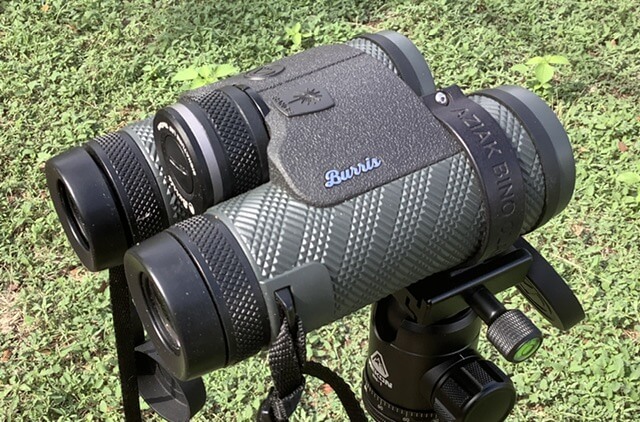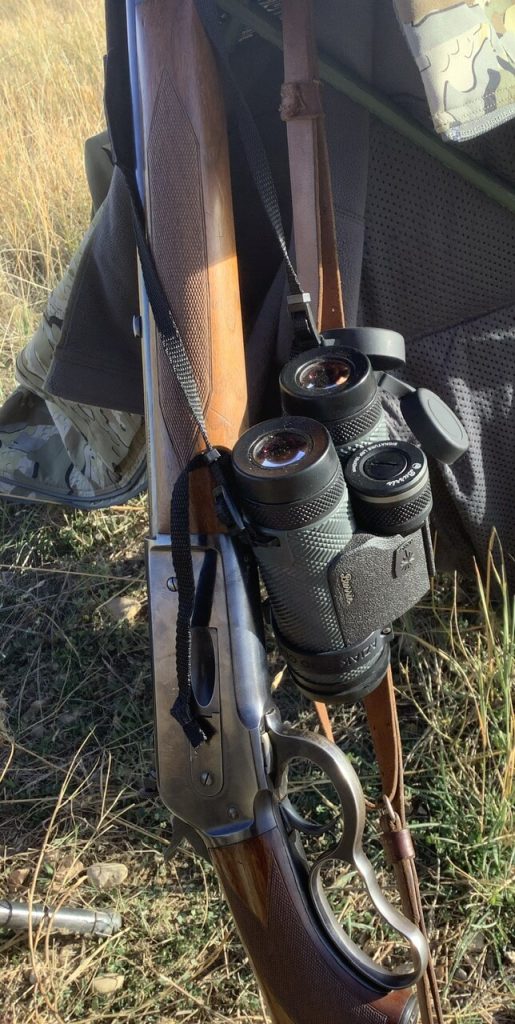
Estimated reading time: 7 minutes
After years of producing great optics at prices that every person could afford, Burris introduced their 10×42 Laser Rangefinding optics. The optic I’ll be reviewing is the binoculars, they’ve been out for a bit now, and I got my hands on a set. Just in time for a scheduled trip to Sweden for a moose hunt and a scientific sample-gathering excursion for seals
Table of contents
The Details of the 10×42 Burris Binoculars

The binoculars are 10×42, weigh 36oz., and use a single CR2 battery. The rangefinder accuracy is to 2600 yards, features a 1/4-20 tripod attachment, and an MSRP of 1200.00. The binos are rubber armored all around and use easily adjustable eyecups. The eyecups work well with my prescription eyewear. The website says they do not come with a neck strap or carry case but my pair did, so it may be a typo.
The strap is a nice neoprene one that is comfortable and adjustable over a wide range. My only complaint is that the strap slides through the buckles a bit too easily. I needed to knot the strap to keep it attached. The case easily allowed me to leave my tripod attachment on the binoculars as well as tuck the instruction manual inside. At least until I’m thoroughly familiar with all the operations and features.
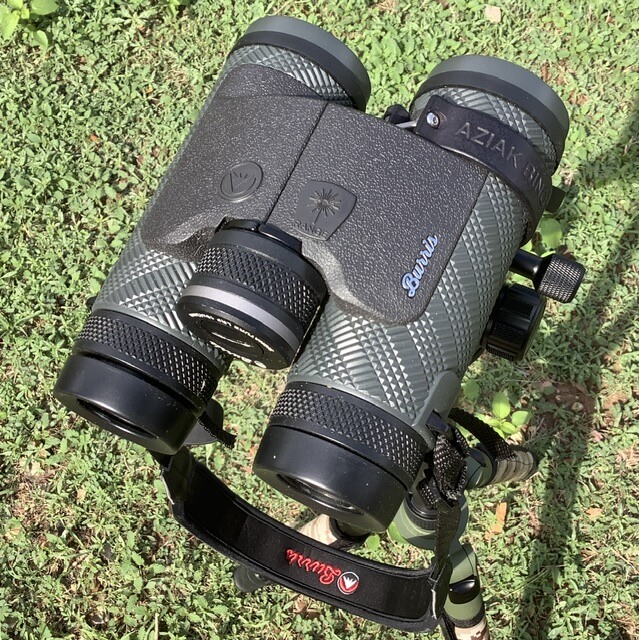
Well Thought-Out Design
READ MORE:The Rundown On Nikon’s LaserForce 10×42 Rangefinder Binoculars
The 10×42 binoculars operate fairly intuitively, but keeping the instructions in the case is handy. There are 3 modes of operation, auto, sport, and hunt. The unit reports distances in line-of-sight or horizontal with angle of degree. The rangefinder uses an aiming reticle that is an open circle. It is a bit bigger than I’m used to. I was concerned about it delivering accurate distances for specific targets. I used reticle and realized my concerns were not warranted. At no time did I ever get wide disparity in ranging objects, all the way out to 800 yards. During my Wyoming hunt, I easily ranged antelope to 2200 yards. The laser rangefinding ability proved rapid and accurate, impressive considering the reasonable price.
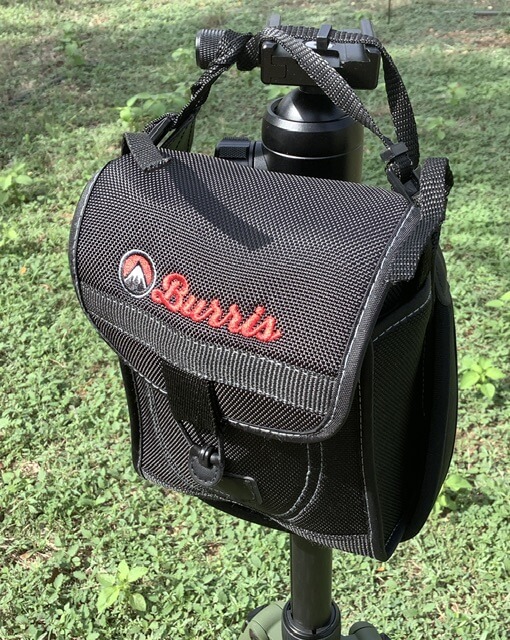
Undisputed Accuracy
When I used my old laser rangefinding binoculars I ranged objects multiple times to ensure accurate readings. Using the 10×42 Burris LRF binoculars I got good accurate and consistent readings on any object I placed in the circle. I ranged reindeer (caribou), trees, roe deer, seals, rocky islands, and brush. I verified ranges with another set of laser rangefinding binoculars and they were within a yard or two every time. Since I was in a wide range of habitats, heavy forests, hilly to mountainous, and open coastline judging distance without the binos would be next to impossible. At one point I second-guessed the accuracy of a reading only to verify it using a satellite app on my iPad.
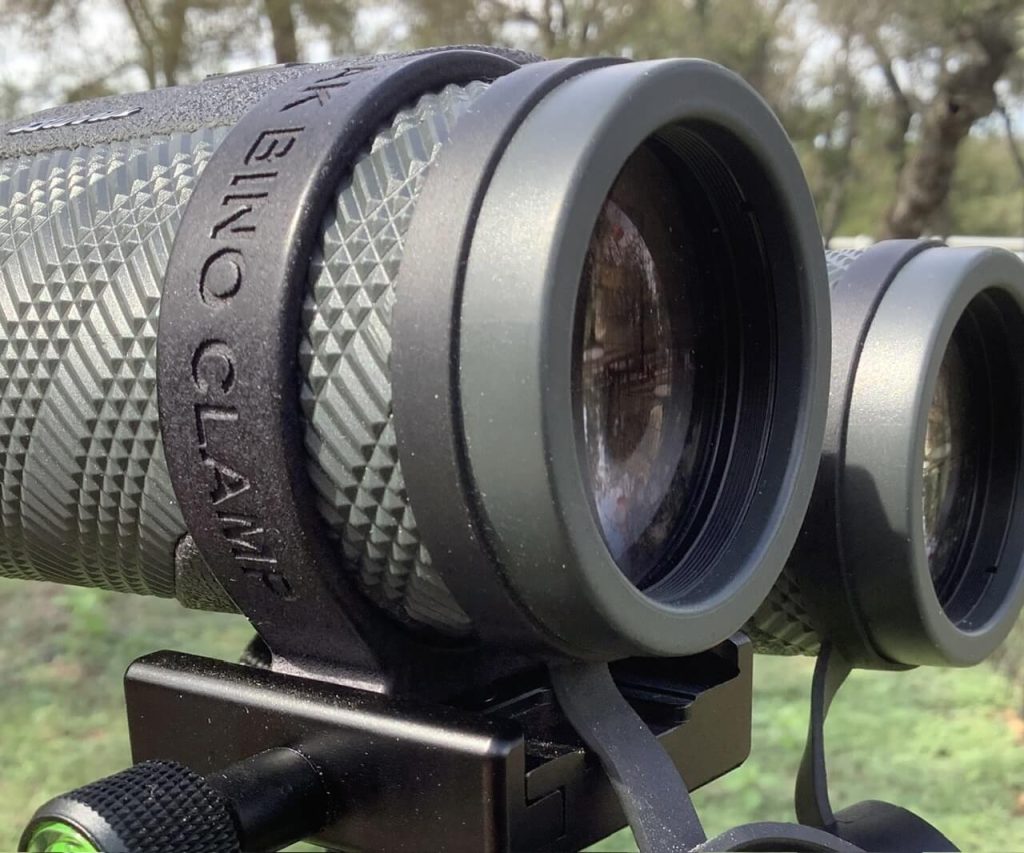
Accessories
During use from a small boat on the Baltic Sea, while collecting samples. I used the binoculars to locate seals sunning on the rocks. Even with the motion of the boats on the sea, eye fatigue never occurred. The wide field of view made locating the seals easy. I wanted a means of using the binoculars with a tripod but didn’t want a detachable or easy-to-lose extra piece of equipment. I chose a semi-permanent attached mount made by Aziak, their #2 worked perfectly. Using a Swiss Arca-rail attachment it can be left attached to eliminate loss. When locked into a tripod it provides easy long-range, long-term viewing.

Most of the surface of the binos is covered in a very tactile feeling checkering. Combined with the rubber armoring the feel is very secure while being held. The large-diameter focus knob with its texturing moves well and is easy to use while wearing heavy gloves. My overall impression is that they are smaller and lighter than my previous laser rangefinding binoculars.
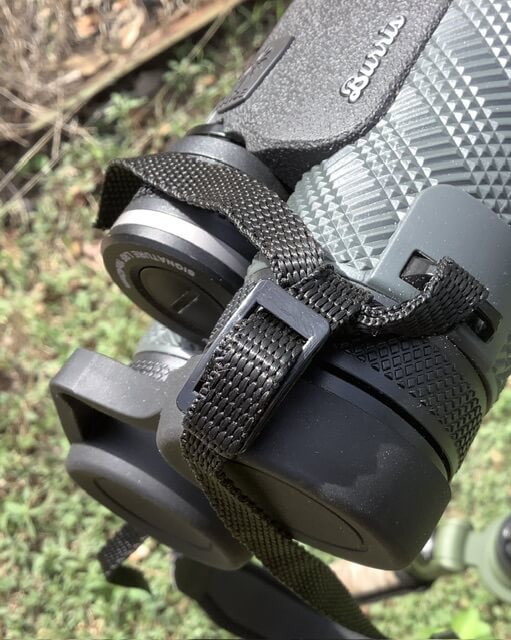
Burris Has a Durable Quality
During my moose hunt portion of the trip, I used it in hilly terrain and marshy areas. I accidentally submerged the 10×42 Burris binos when I slipped and fell into a deep marshy hole. It never lost power or faltered, a quick wipe down with a rag and it went right on working flawlessly. The glass and clarity are better making them definitely easier on the eyes. The individual protective cups for the front lenses stay on securely, as do the twin one-piece protective covers for the eyepieces. This feature I like a lot since many slip off without notice. Only to be discovered when you raise the binos and discover food, water, or some other stuff obstructing your vision.
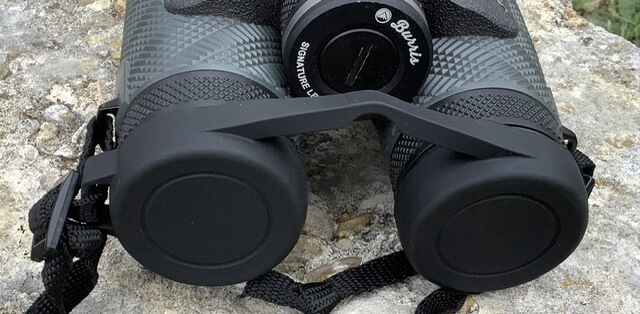

I like these 10×42 Burris binoculars enough that I gave my other pair of laser rangefinding binoculars to a cousin. These are keepers, I will be using them for antelope and mule deer in Wyoming. Also Whitetails and feral hogs in Texas, elk in Colorado, and black bear in Maine, and will provide years of use. I’m sure they will be in my pack or on my neck for many years to come. The best feature of all, is they are covered by the Burris Forever warranty, no questions asked.
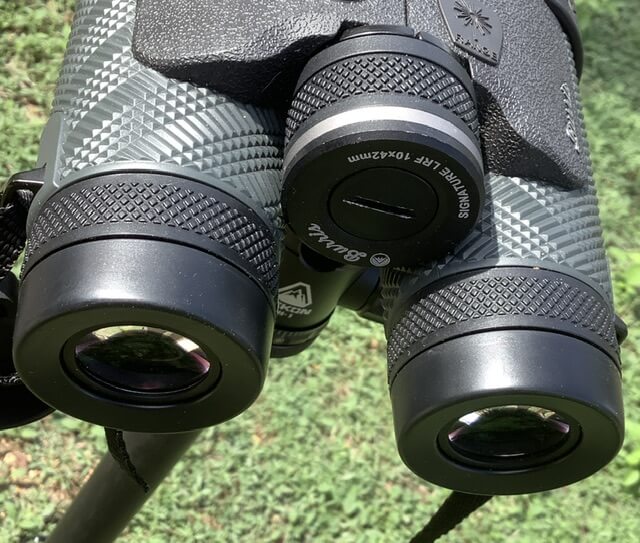
The 10×42 Burris Best and Least List
As with all my reviews, my best and least list is as follows……
The biggest surprise,……the clarity, speed of reading, and accuracy provided by such a reasonably priced unit.
The biggest disappointment,……that the availability of the unit isn’t more widespread, they are an excellent value.
Best liked feature,……set up includes displaying both line of sight distance and actual gravity affecting distance. On more than one occasion in Wyoming, I thought the angle was considerably steeper but the LRF showed only a few yards difference. It allowed me to accurately place my shot on a mule deer.
My least liked feature,…….the buckles on the neck strap allowed the strap to slide, it could cause a loss of the unit or damage.
